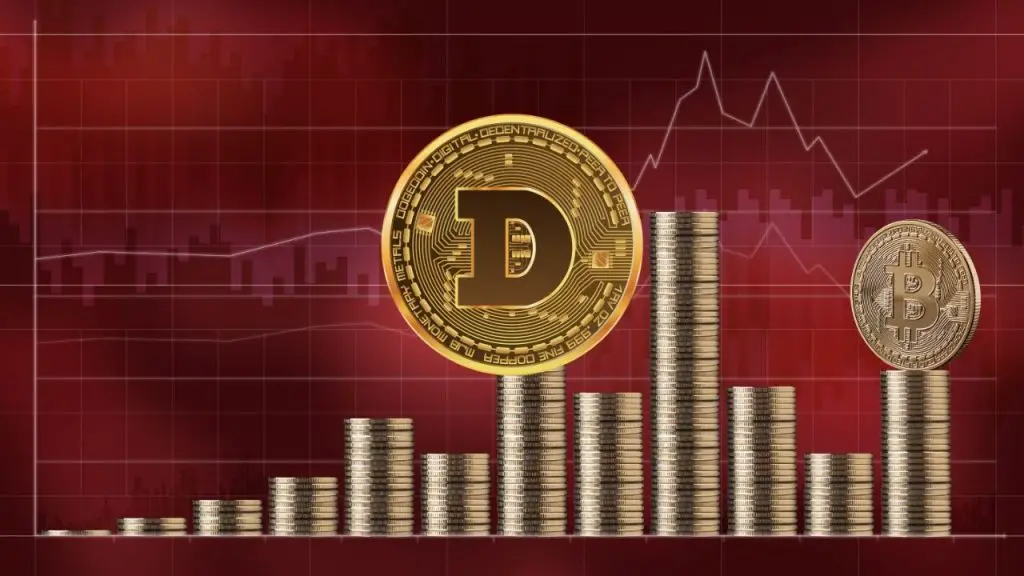Dogecoin is one of the oldest cryptocurrencies. Bitcoin has been here since 2009, and Dogecoin started in 2013. Since then, numerous coins came and vanished, but Doge never went away.
DOGE is one of the least volatile cryptos out there. There’s no doubt that Dogecoin will reach 10 cents per coin before 2021 ends. This article will explain why it will get to $0.10/per coin within this year.
If you look into Reddit, Facebook, Twitter, and other social networks, you will see that Doge has the second-largest followings after Bitcoin. The success of crypto depends on users and adoption. When millions of people holding Dogecoin, there’s no doubt it will not fail.
One of the primary criticisms of Doge is that it’s inflationary. Many crypto critics say that people will never adopt it because of inflation, and the price will never rise. But we disagree.
Ethereum, Tether, Polkadot, and several other top 10 cryptos are also inflationary. Still, all these cryptos have a market cap of more than $30 billion. Furthermore, Ethereum has around a $200 billion market cap. Therefore, even though Dogecoin is inflationary, its price can rise significantly if its adoption increases.
There is about 130 billion Dogecoin in circulation today. Each year the Doge blockchain network will add 5 billion more coins. Therefore, at the end of 2021, there will be around 135 billion coins in circulation. At 10 cents per coin, the total market cap would be 135 x $0.10 = $13.5 billion. Compared to Bitcoin, Ethereum, Tether, and other cryptos, this market capitalization is minuscule. Achieving this price target is easy.
Many claim that Dogecoin was created as a joke, thus it has no utility, and no one values it as legitimate crypto. But it’s also a ridiculous claim. Many businesses started as small but later flourished.
Jeff Bezos started Amazon to sell books online, eBay’s founder began his company to sell used products. Up until 2010, no one took Amazon seriously and was dismissed as an online bookseller. Over the years, Amazon’s adoption increased tremendously. Similarly, Dogecoin is not widely accepted today does not mean that no businesses will adopt it even in the future. Each day more companies are accepting Doge as a payment.
Doge was started as a joke that does not mean that it has no use. In fact, it’s more useful than Bitcoin.
Bitcoin has a block time of 10 min whereas Doge has 1 min block time. Therefore, the Dogecoin transfer speed is ten times faster than Bitcoin.
Bitcoin is deflationary. Miners are the backbone of every blockchain. There are 18.5 million Bitcoins that have been mined, and a total of 21 million coins will ever exist in the Bitcoin network. When the network achieves this limit, there will be no incentives for miners to support the network. If they do, they have to increase the transaction fees absurdly high to be profitable. We see this effect already.
If you visit https://blockchair.com/bitcoin, you can see that Bitcoin transaction fees are absurdly high. The same goes for Ethereum. On the contrary, Dogecoin is not only faster but also cheaper to transfer. It’s primarily because of its 1 min block time and the inherent inflation. Let’s explain further.
People see Bitcoin as digital gold and a store of value. Therefore, many investors are buying and holding Bitcoin in hopes that its price would go up and profit from it. Though it can be used as a transactional currency, it’s not practical due to the high transfer fee. For example, we have ACH and Wire transfer. However, Wire transfer is not popular because of its high transfer fee, even though it’s faster than ACH. From this real-world experience, we can conclude that it’s doubtful that Bitcoin will ever be used as a digital currency.
Because of the inherent inflation, people don’t see Dogecoin as a store of value. Therefore, it’s not the best crypto for holding long-term. It creates an environment where people want to use their Doge instead of hoarding them. Even though the inflation rate decreases each year and inflation is far lower than other cryptos, human psychology pushes people to spend Dogecoin.
For example, the Polkadot (DOT) has 10% inflation. If we compare this with Doge inflation, we will quickly find that Doge is a far superior cryptocurrency to DOT. Dogecoin’s inflation reduces each year and eventually will become 0. Here’s a table that shows Dogecoin’s inflation over several decades.
| Year | Estimated Dogecoins | Inflation rate |
|---|---|---|
| 2021 | 130 Billion | 3.85% |
| 2025 | 150 Billion | 3.33% |
| 2030 | 175 Billion | 2.86% |
| 2035 | 200 Billion | 2.5% |
| 2040 | 225 Billion | 2.22% |
| 2045 | 250 Billion | 2% |
| 2050 | 275 Billion | 1.82% |
| 2060 | 325 Billion | 1.54% |
| 2070 | 375 Billion | 1.33% |
| 2080 | 425 Billion | 1.18% |
| 2090 | 475 Billion | 1.05% |
| 2100 | 525 Billion | 0.95% |
As you can see, though Dogecoin has an unlimited supply, the actual inflation rate goes down, making this coin deflationary. So, those who criticize Dogecoin for having an endless supply are wrong. They are missing the bigger picture.
If DOT can have a market cap of more than $30 billion with 10% inflation, achieving a $13.5 billion market cap hence 10 cents per Dogecoin is no brainer.
Furthermore, all the inflation directly goes to Doge miners. It indirectly decreases the transaction fees. This high speed and the low fees will make Dogecoin an attractive crypto, and its adoption will increase each year.
As more people come to know about this altcoin, its price would rise accordingly. Therefore, We are confident Dogecoin would reach 10 cents ($0.10) per coin before the end of 2021.
